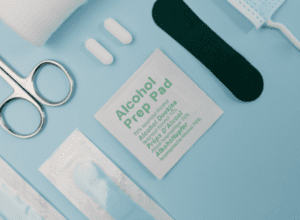What Is the Best Way to Ensure Workplace Safety for Your RCFE?
Workplace safety is an important subject when it comes to managing a residential care facility for the elderly (RCFE) and needs to be considered when you want to start an assisted living business.
While regulations for workplace safety are required by law, they also set the stage for a healthy and effective workplace culture at your RCFE.
An RCFE is a complex environment to manage. Staff provide residents with personal care, meal preparation, medication assistance, activities, housekeeping, laundry tasks and facility maintenance.
Each of these operations carries its own set of occupational hazards. By prioritizing workplace safety, you set the example for everyone at your RCFE and create many tangible benefits for your whole facility.
Remember, you must know your workplace safety regulations before you can submit your RCFE license application and open an RCFE. Additional information is available on workplace safety in the OSHA manual for RCFEs.
Prioritizing Workplace Safety Shows You Care About Your Workers and Residents
When an employer goes out of their way to ensure day-to-day tasks are being performed safely, it shows everyone that the leadership is looking out for the safety of those they are responsible for. This action has an effect on workers and residents.
When workers know the leadership cares about their well-being and workplace safety, rules are communicated to staff along with this message. Those actions will help build relationships between workers and leadership in your RCFE
If you take care of your personnel, they will take care of you. You enforce safety because it keeps people safe, not just because of regulations.
Let’s review a few pieces of information about workplace safety protocols.
When to Report Injuries and Illness at an RCFE
If an incident happens at your RCFE where a worker may have been injured or becomes ill, being aware of the regulations regarding incident reporting are critical. Here are the required steps to determine if an incident must be reported at your RCFE:
- Was it fatal?
- Was there a hospital admission for the worker?
- Was there an amputation or loss of an eye?
- Did serious permanent disfigurement occur to some degree?
If the answer is no to all of these questions, the incident does not need to be reported. But, if the answer is yes to any of these questions, you must report the incident to CA/OHSA immediately, within 8 hours at the latest.
Reporting incidents quickly (when required) will ensure you stay within regulations and show that you prioritize the safety of those at your RCFE.
Make Sure Patient Handling Is Being Handled Properly
Each year, thousands of injuries occur to patients due to unsafe handling. To make sure your RCFE doesn’t produce one of these statistics, know the patient safe handling regulations.
Patient safe handling regulations apply when the handling of the patient falls within one of the types of patient handling categories. There are four types of patient handling, according to first aid certificate RCFE California regulations:
- To lift: moving the body of a patient vertically or supporting any part of the body or the entire body.
- To mobilize: placing in motion any part of the patient’s body or to assist in doing so
- To reposition: altering the position of the patient in a chair, gurney, bed, or another type of support
- To transfer: moving a patient from a surface to another surface, for example, from a gurney to a bed
Make sure you review the patient handling regulations and ensure they are followed when patient assistance activities fall within one of these categories.
Also, patients might know when they are being handled improperly. Your patients should know and feel they are being cared for and that they are your priority.
Hazardous Chemicals Are Not for Consumption
Hazardous chemicals need to be properly labeled according to regulations. Don’t assume that it is obvious to everyone at an RCFE what items are hazardous and which ones are not. Below is a partial overview of how hazardous materials should be labeled according to regulations.
Hazardous chemicals require the following elements on labels:
- Name, address, and phone number for the manufacturer of the chemical, importer, or other party that is responsible
- Product identifier: this is the method for how the hazardous chemical is identified. For instance, this could be the name of the chemical, batch number, or its code. The product identifier must be the same on both the label and in section one of the SDS
- Signal words must be used on the label to communicate the level of severity of the hazard and alert the person who is reading to the potential hazard. Only two words can be placed as signal words, “danger” and “warning”
- For a given hazard class, “danger” is for the more severe hazards. “Warning” is for the less severe hazards.
- Hazard statements must be present. Hazard statements outline the nature of the hazards of the chemical.
- When appropriate, this will describe how hazardous the chemical is. For example, a chemical might cause damage to the kidneys as a result of exposure to the skin.
These are only some of the elements required on labels! Make sure to read the Cal/OSHA Hazard Communication Regulation — a Guide for Employers That Use Hazardous Chemicals to know the complete list of required elements!
An RCFE may have residents who have a hard time discerning hazards. A resident could have poor eyesight or be unable to tell what is dangerous because of intellectual disability, to name only a couple of reasons.
Workers might get distracted while trying to handle multiple tasks or might not be familiar with containers or chemicals. Clear labeling, proper handling, and correct storage of all hazardous chemicals are needed to create your desired safe environment.
Make Sure Your RCFE is OSHA Compliant
Again, If you are looking to open an RCFE, workplace safety regulations are just one of the subjects you will have to know.
Make sure you are knowledgeable about workplace safety and other requirements. The assisted living administrator certification you must obtain for the RCFE license application will test your knowledge of these topics.
Taking Care of Your team
There is a lot to know when it comes to workplace safety for your RCFE! Here we briefly reviewed regulatory information for incident reporting, patient handling, and labeling hazardous chemicals.
Our brief review should remind you that there are many regulations to stay on top of. This overview only scratches the surface.
Regulations can be very detailed with their requirements. You will need to get your hands on the regulations and read through them to ensure you are following the rules correctly.
Make sure you and your staff have the complete list of updated workplace safety regulations. Get the latest version of the OHSA manual for RCFEs.
Remember, safety starts with you. It is important to understand that when you are running an RCFE, everyone will be looking to you for guidance. .
However much you ‘let things slide’ or ignore regulations when it is convenient, your workers will match your example. Your behavior example will determine how your workers follow regulations when you are not there.
Assisted Living Education is Your Resource for RCFE Certifications, Licenses and Guidance
In the end, the responsibility falls on you. Are you looking to improve your RCFE’s performance?
Assisted Living Education is a certified vendor providing RCFE classes for employees and guidance in keeping your RCFE compliant and running smoothly.
Contact us today.








